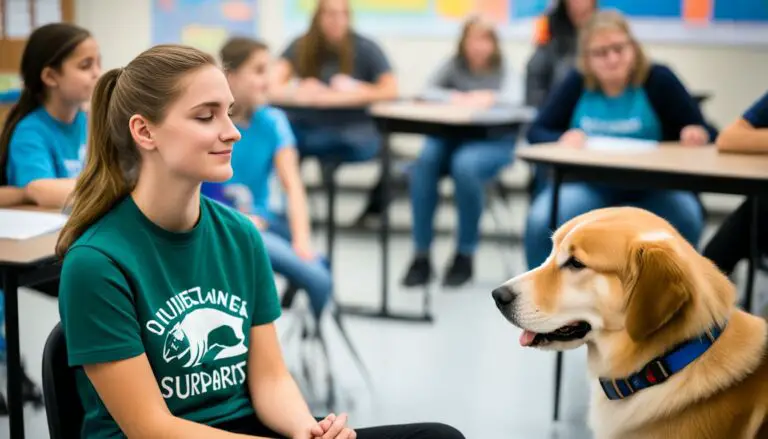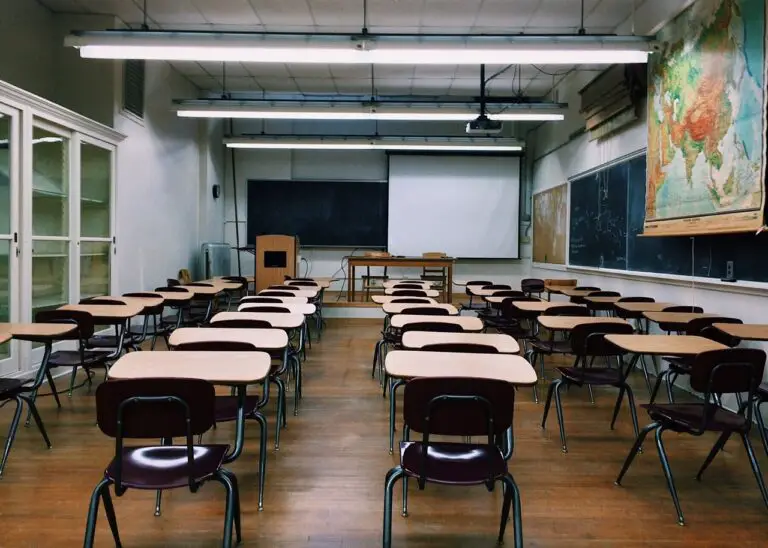How Schools Deal with Bullying: Strategies and Best Practices
Bullying is when someone purposefully acts aggressively, using their power unfairly. It happens repeatedly and can be physical, verbal, or relational. Boys might use more physical bullying, while girls often seek social exclusion.
Victimization is the experience of being bullied. It can seriously affect mental health, academic performance, and social relationships.
Schools must take steps to prevent and address bullying to create a safe and supportive learning environment for all students.
Bullying comes in various forms, with physical, verbal, and social being a few examples. In physical bullying, individuals use physical force like hitting, kicking, or pushing to harm others.
Verbal bullying involves using words to hurt others, such as teasing, name-calling, or spreading rumors. Social bullying consists of excluding others from social activities or spreading rumors to damage a person’s reputation.
Schools need to have clear policies in place to prevent and address bullying. These policies should include procedures for reporting and investigating bullying incidents and consequences for those who engage in bullying behavior.
Schools should also provide support for victims of bullying and work to create a positive school climate that promotes respect and empathy for others.
The Impact of Bullying
Bullying seriously hurts people’s feelings. It makes them sad, worried, and less sure about themselves. Studies say that bullied people feel more of these bad things than those who aren’t.
Depression is a common effect of bullying. Victims of bullying are more likely to experience sadness, hopelessness, and worthlessness.
Experiencing bullying can result in a diminished interest in once-enjoyable activities. Additionally, it may trigger anxiety, manifesting in physical symptoms like headaches, stomachaches, and muscle tension.
Anger is another common effect of bullying. Victims may feel angry towards their bullies, as well as towards themselves, for not being able to stop the bullying. This anger can lead to aggressive behavior, which can further perpetuate the cycle of bullying.
🌟 Hey Students! 🚀 Ready for the ultimate experience? Join us on Studentsinside.com's Facebook, YouTube, WhatsApp, and LinkedIn. Click now for tips, fun, and success vibes! 🌈✨ #StudentLife #JoinUs
Bullying hurts a person’s confidence. It makes them feel unsure about themselves and can even make them avoid being around others. This makes them feel alone and sad, making the bullying even worse.
Schools need to do something about bullying. They should help the people being bullied by giving them support and resources. This way, schools can become safer and more welcoming for everyone.
Signs of Bullying
Bullying is a serious issue that can significantly impact a child’s physical and emotional well-being. Teachers and parents need to be aware of the signs of bullying so that they can take action to prevent it from happening.
Here are some common signs that a child may be experiencing bullying:
- Regular complaints of headaches or stomach aches, accompanied by feelings of sickness or pretending to be unwell.
- Shifts in eating patterns, such as abruptly skipping meals or binge eating.
- Struggles with sleep and has frequent nightmares.
- Deterioration in academic performance, a waning interest in schoolwork, or a reluctance to attend school.
- Avoiding school or extracurricular activities
- Unexplained injuries or damaged belongings
- Social isolation or withdrawal from friends and family
- Low self-esteem or self-blame
- Anxiety or depression
- Aggressive behavior toward others
It is important to note that these signs do not necessarily mean that a child is being bullied, but they can be indicators that something is wrong. It is essential to talk to the child and gather more information to determine if bullying is the cause of their distress.
Teachers and parents can also look for behavioral signs that a child may be bullying others. These signs may include:
- A need to dominate or control others
- Aggressive behavior towards others, including physical violence or verbal abuse
- Refusal to take responsibility for their actions
- Blaming others for their problems
- Lack of empathy or concern for others
- Difficulty following rules or authority figures
If a child displays these signs, addressing the behavior and providing appropriate consequences to prevent further harm to others is vital. It is also essential to work with the child to address the underlying issues that may be causing them to bully others.
Bullying Prevention Strategies
Making sure schools are safe and healthy for everyone depends on stopping bullying. Schools can do this by preventing bullying and promoting a culture of respect and inclusion. Here are some effective bullying prevention strategies that schools can implement:
Education and Awareness
One of the most effective ways to prevent bullying is by educating students, teachers, and parents about recognizing it. Schools can provide training sessions, workshops, and seminars to raise awareness about bullying and its negative effects. By educating everyone in the school community, schools can create a shared understanding of bullying and how to prevent it.
School-Wide Policies and Practices
Schools can create policies and practices that promote a safe and inclusive environment for all students. This includes having clear rules and consequences for bullying behavior and supporting bullying victims. Schools can also establish a reporting system for students to report bullying incidents anonymously.
Peer Support and Mentoring
Peer support and mentoring programs can effectively prevent bullying by creating community and support among students.
Engaging in these programs allows students to develop positive connections with both their peers and mentors, ultimately lowering the chances of engaging in bullying behavior.
Positive Behavior Interventions and Supports (PBIS)
PBIS is a proactive approach to promoting positive behavior and preventing negative behavior, such as bullying. This approach involves teaching students social and emotional skills, recognizing positive behavior, and providing positive reinforcement.
Restorative Practices
Restorative practices are all about fixing the harm from bullying and making students take responsibility. This method digs into why bullying happens and helps students see the impact of what they do. It stops bullying by making students understand and respect each other.
Role of School Staff and Administrators
School staff and administrators are vital in stopping bullying. They need to make sure the school is safe and welcoming for everyone. Teamwork is critical for creating and implementing solid anti-bullying rules and actions.
One of the critical responsibilities of school staff and administrators is to train all school personnel on how to recognize and respond to bullying.
This training should cover topics such as the warning signs of bullying, appropriate responses to bullying, and strategies for preventing bullying from occurring in the first place.
By providing this training, school staff and administrators can ensure all school personnel have the knowledge and skills to address bullying effectively.
School staff and administrators play a vital role in building a respectful school culture. They must set clear behavior expectations, hold students accountable, and encourage positive relationships. It’s also important to empower students to speak out against bullying.
In addition to these responsibilities, school staff and administrators should be prepared to respond quickly and effectively to bullying incidents.
This may involve investigating the incident, supporting the victim, and taking appropriate disciplinary action against the perpetrator.
The Importance of SEL in Bullying Prevention
Social and Emotional Learning (SEL) is essential to preventing school bullying. SEL teaches students to manage emotions, empathize with others, and develop positive relationships.
These skills can help prevent students from getting involved in bullying and promote a more inclusive and respectful school environment.
Understanding and sharing others’ feelings, known as empathy, is a crucial skill SEL teaches. When students have empathy, they’re more likely to accept different peers and less likely to bully.
SEL also teaches self-control, helping students manage emotions and avoid impulsive actions that lead to bullying.
In addition, SEL emphasizes kindness and respect, which are essential for a positive school culture. When students treat each other with kindness and respect, bullying decreases, and they’re more likely to step in when others are bullied.
Integrating SEL into the classroom can be done in various ways, such as through classroom discussions, role-playing activities, and mindfulness exercises.
Involvement of Parents and Families
Parents and families are essential in stopping and dealing with school bullying. Schools must work with them to ensure all students feel safe and included.
Here are some ways in which parents and families can be involved:
- Communication: Good communication between schools and families is crucial for dealing with bullying. Schools should share their anti-bullying rules with parents and give them helpful resources to recognize and handle bullying situations.
- Parent-teacher conferences allow parents to discuss concerns about their child’s experience at school, including bullying. Schools can use these conferences to educate parents about the signs of bullying and how to support their children.
- Parent Involvement in School Activities: Encouraging parents to participate in school activities can help them feel more connected to the school community and better equipped to address bullying. Schools can provide opportunities for parents to volunteer in the classroom, attend school events, and join parent-teacher associations.
- Anti-Bullying Task Forces: Schools can set up anti-bullying teams with parents, students, teachers, and administrators. These teams can join forces to create and put in place strategies to stop and deal with bullying.
- Training for Parents: Schools can offer training sessions for parents to help them recognize and respond to bullying. These sessions can provide information on the types of bullying, how to talk to their child about it, and how to work with the school to address it.
Involving parents and families in preventing and addressing bullying can lead to a more comprehensive and effective approach. Schools need to recognize the critical role that parents and families play in creating a safe and inclusive environment for all students.
Cyberbullying in the Digital Age
Schools are worried about cyberbullying due to the rise in technology use. Cyberbullying is when mean or harmful stuff is sent online, like sharing false information or embarrassing details.
In a survey, 22 percent of students aged 12-18 said they were bullied in the 2018-19 school year. Out of these, 15 percent faced online or text bullying.
To tackle cyberbullying, schools use different strategies. One way is teaching students about digital citizenship and how to behave online. This includes explaining the impact of online actions, respecting others’ privacy, and guiding on reporting cyberbullying.
Another strategy is setting clear rules and consequences for cyberbullying. Schools make rules for good online behavior and say what happens if you break them, like suspension or expulsion.
Technology is also used to stop cyberbullying. Some schools use software to watch online activities and find possible cyberbullying. Others have a system where students can report bullying without telling who they are.
Anti-Bullying Laws and Policies
Schools need clear rules to stop bullying. These rules must be updated often to work well. States have different anti-bullying laws for schools to follow.
These laws usually say schools must quickly report and check bullying. They also need to act to stop it and punish the bullies. Some states say schools must give counseling to the victim and the bully.
Even though there isn’t a dedicated national law against bullying, certain situations may be considered harassment. Federal laws, enforced by the U.S. Department of Education and the U.S. Department of Justice, mandate that schools intervene to halt unfair treatment linked to aspects like race, color, or disability.
Schools can also make rules about how students should treat each other. Everyone—students, parents, and teachers—should know these rules. If someone sees bullying, they should tell an adult. Schools need an excellent system to deal with reports of bullying.
Bullying in the Pandemic Era
The COVID-19 pandemic messed up many things, like school. When classes moved online, people wondered about bullying. Surprisingly, the pandemic changed how bullying happens.
A study from Boston University found that when schools closed in spring 2020, bullying in the United States went down a lot—between 30 and 40 percent.
Internet search data also showed a decrease in searches for “school bullying,” “bullying,” and “cyberbullying” during the pandemic months of March 2020 to February 2021.
While the decrease in bullying is a positive trend, it is essential to note that the pandemic has created new opportunities for bullying. Cyberbullying has become more prevalent with increased remote learning and social media use.
A survey by the Cyberbullying Research Center found that while school bullying behaviors have dropped during the pandemic, the findings for cyberbullying were less clear.
Schools must remain vigilant in addressing bullying in the pandemic era. This includes providing resources and support for students experiencing bullying, in-person or online.
It also means educating students on appropriate online behavior and the consequences of cyberbullying.








